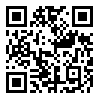Received: 2011/09/30 | Accepted: 2012/02/12 | Published: 2014/06/23
URL: http://ijwph.ir/article-1-172-en.html
BibTeX | RIS | EndNote | Medlars | ProCite | Reference Manager | RefWorks
Send citation to:
2- Department ofClinical Toxicology, Director of Medical Toxicology Research Center, Faculty of Medicine, Mashhad University of Medical Sciences, Mashhad, Iran., Medical Toxicology Research Center, Faculty of Medicine, Mashhad University of Medical Sciences, Mashhad, Iran
3- Department of Oral Medicine, Oral and Maxillofacial Disease Research Center, Faculty of Dentistry, Mashhad University of Medical Sciences, Mashhad, Iran ,
4- Assistant professor, Department of Oral and Maxilofacial Pathology, Dental Research Center, Faculty of Dentistry, Mashhad University of Medical Sciences, Mashhad, Iran., Faculty of Dentistry, Mashhad University of Medical Sciences, Mashhad, Iran.
5- Mashhad University of Medical Sciences, Faculty of Dentistry, Mashhad University of Medical Sciences, Mashhad, Iran.
Background: Mustard gas or sulfur mustard (SM) is one of the most important alkylating chemical warfare agents that was widely used the world war I and in the Iran-Iraq war It acts as an alkylating agent with long-term toxic effects on skin, eyes, respiratory system, bone marrow tissues, and the mucosal cells of the gastrointestinal tract resulting in several early and long-term effects on human health, many of them cannot be defined clinically or pathologically. regarding the fact that no study has been performed on dental therapeutic needs of these patients in Iran, this study was conducted to determine the frequency of oral soft tissue lesions of toxic veterans referred to medical toxicology Center of Imam Reza hospital to oral medicine department, Mashhad Dental School of Mashhad University.
Purpose: The aim of this study was to determine the dental conditions and therapeutic needs in sulfur mustard veterans which referred from Medical Toxicology Research Center (MTRC) to Mashhad Dental School in 2009.
Methods &Material : This is a descriptive (cross-sectional) study. Following coordination and obtaining the informed consent, the veterans of Khorassan Razavi with delayed complications of sulfur mustard (SM) poisoning were referred from MTRC of Mashhad University of Medical Sciences to oral medicine clinic of Mashhad faculty of dentistry. The teeth of the patients were examined by an oral medicine specialist using dental mirror and other required tools. The information obtained by WHO Questionnaire. The collected data were as follow: Demography information, abnormalities of teeth and oral cavity and the dental therapeutic needs. The statistical analysis was performed bySPSS (version11.5Using appropriate statistical tests.
Result: This study was carried out on 40 male SM veterans with a mean age of 50.7 years (minimum 39 and maximum 71 years) the patients had oral soft tissue lesions and were edentulous. . Majority (75%) of patients need to be treated dentally, including oral hygiene instruction (60%) , fixed prosthetic (40%), root canal therapy (12.5%), tooth extraction (12.5), restorative treatment )5.25%( and follow up for denture adjacent(5.0%).The most common therapeutic needs were OHI and partial or fixed prosthesis.
Conclusions: Most patients needed oral hygiene instruction and treatment for the oral lesions. It is thus recommend considering routine oral dental examination and treatment at regular intervals for the patients with delayed complications of SM poisoning.








